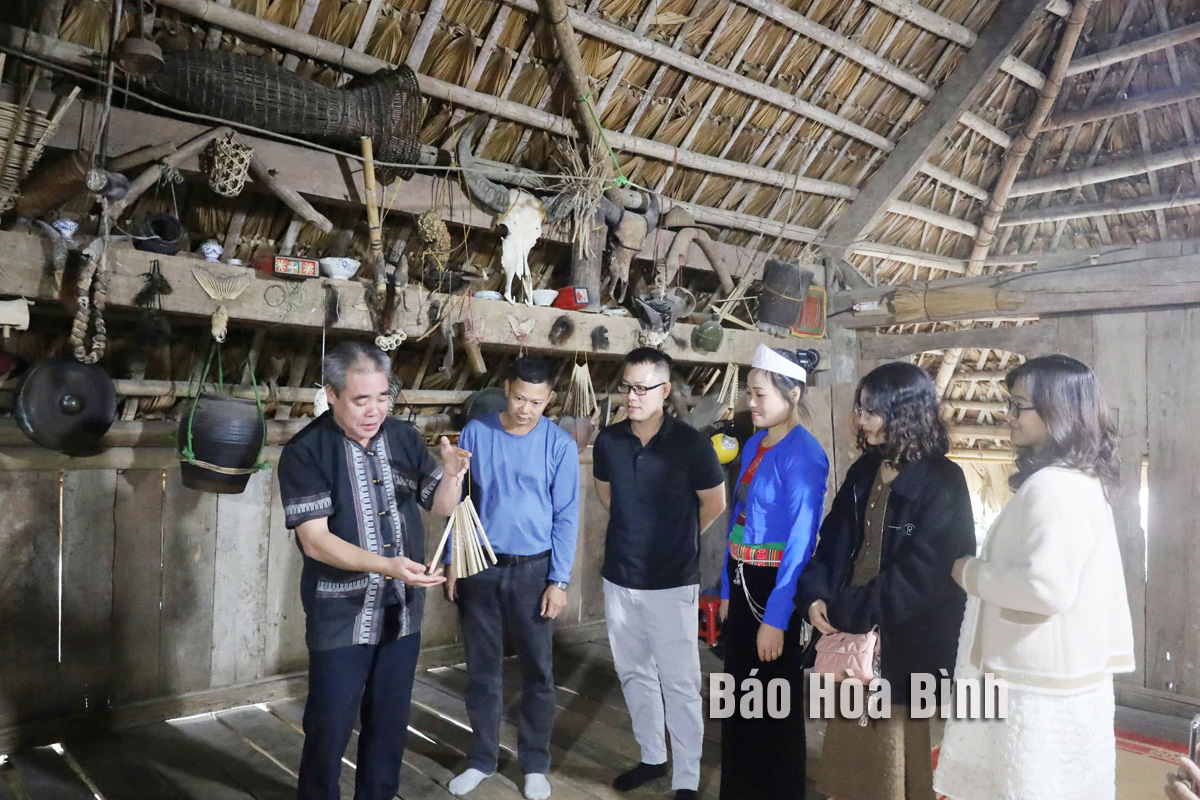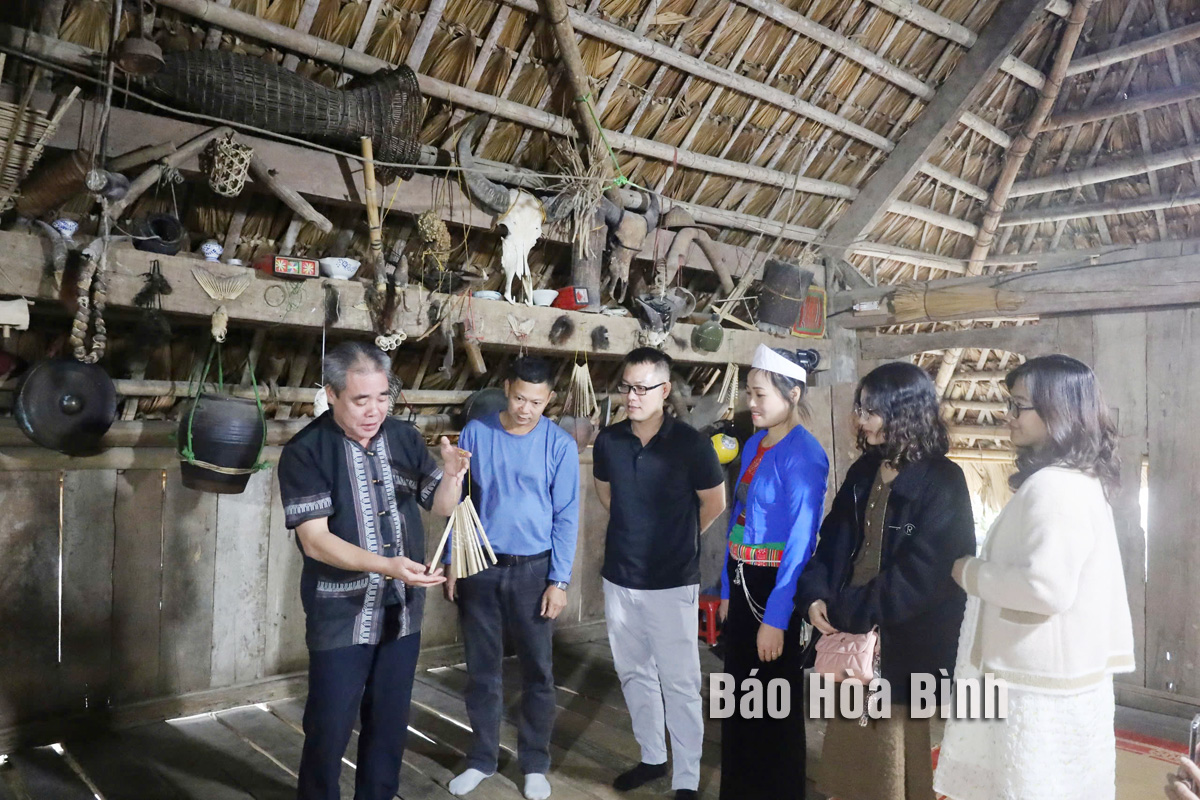
Muong calendar, known as sach doi, is an ancient folk knowledge system developed through observations of the movement of the pleiades star. This unique calendar consists of 12 bamboo sticks, each representing a lunar month. Specific days within each month are marked with distinct symbols, guiding locals in determining auspicious and inauspicious days for important activities.
The bamboo calendar is still preserved and displayed by the Muong community in
Mo hamlet, Binh Thanh commune, Cao Phong district, where locals continue to
apply its wisdom in their daily lives.
According to Muong legend, the Muong Bi calendar dates back to the era of King
Dit Dang, the earliest ruler of the Muong people. It is believed to have first
emerged in Muong Bi, an area historically linked to the early days of the Hung
Kings’ reign.
As one
of Vietnam’s indigenous ethnic groups with a rich history, the Muong people
developed their own sophisticated timekeeping system. The Muong Bi calendar is
remarkably detailed, dividing time into precise units: a day consists of 16
hours (each Muong hour is roughly equivalent to 1.5 Kinh hours), a month spans
29-30 days structured into three weeks of 10 days each, and a year is divided
into 12 months across four quarters.
The
calendar deeply influences both Muong society and daily life. However, its
application is geographically specific - local proverbs such as "ngay lui thang
toi” (days regress, months advance) reflect agricultural traditions unique to
Muong Bi and do not necessarily apply to other Muong regions.
Thanks
to its historical and cultural significance, the Muong bamboo calendar of Hoa
Binh province, alongside the Khai Ha Festival, the Keeng Loong dance of the
Thai people, and the Xen Ban Festival in Mai Chau, has been officially
recognised as National Intangible Cultural Heritage by the Ministry of Culture,
Sports and Tourism.
Beyond
the calendar, the Muong people boast a rich cultural legacy, including the
iconic Muong drums, gongs, script, and traditional villages. These elements not
only preserve the unique identity of the Muong community but also attract
researchers, archaeologists, and folklore enthusiasts, as well as visitors
eager to experience Hoa Binh’s vibrant cultural heritage.
With an increasingly vibrant and widespread emulation movement aimed at building cultured residential areas and cultured families, Yen Thuy District has been making steady progress toward improving both the material and spiritual well-being of its people, while fostering a civilized, prosperous, beautiful, and progressive community.
Once lacking recreational spaces and community facilities, Residential Group 2 in Quynh Lam Ward (Hoa Binh City) has recently received attention for the construction of a new, spacious, and fully equipped cultural house. The project followed the model of state support combined with public contributions in both labor and funding.
The "All people unite to build cultural life" movement, which has been effectively integrated with Kim Boi district’s socio-economic development goals, is fostering a lively spirit of emulation across local residential areas, hamlets, villages, public agencies, and enterprises. In addition, through the initiative, traditional cultural values are being preserved and promoted, while community solidarity and mutual support in poverty reduction and economic development are being strengthened.
A working delegation of the Hoa Binh provincial People’s Committee led by its Permanent Vice Chairman Nguyen Van Toan on June 11 inspected the progress of a project to build the Mo Muong Cultural Heritage Conservation Space linked to tourism services in Hop Phong commune, Cao Phong district.
Born and growing in the heroic land of Muong Dong, Dinh Thi Kieu Dung, a resident in Bo town of Kim Boi district, in her childhood was nurtured by the sweet lullabies of her grandmother and mother. These melodies deeply imprinted on her soul, becoming an inseparable part of her love for her ethnic group's culture. For over 20 years, this love for her hometown has driven Dung to research, collect, and pass down the cultural values of the Muong people to future generations.
In the final days of May, the Ethnic Art Troupe of Hoa Binh Province organized performances to serve the people in remote, mountainous, and particularly disadvantaged areas within the province. These were not just ordinary artistic shows, but they were the meaningful journeys aimed at spreading cultural values, enhancing the spiritual life of the people and contributing to the preservation of ethnic minority cultural identities.



